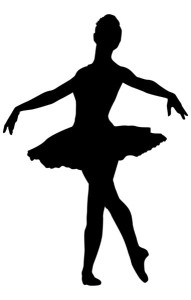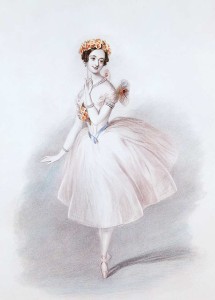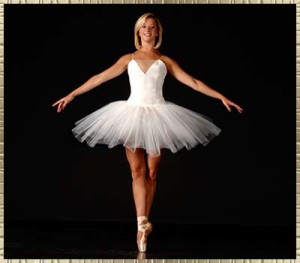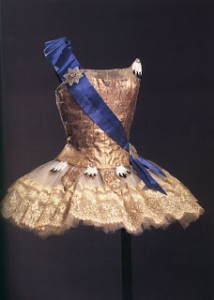A magical costume is needed to fit the romantic and magical storylines that have come to characterize ballet. What better materials than layers of transparent tulle, stiff satin, and sparkling jewels?
The tutu has become the iconic sport attire for the female athletes that are called ballerinas. Like all sport uniforms, the tutu is designed to enhance and enable every defining aspect of the sport: it shows off the dancer’s technique, allows for free, flexible movement, and adds to the beauty and romance that are so integral to ballet.
When you think of a tutu, what image comes to mind? A decorated bodice with a tulle skirt sticking out from the dancer’s waist? This is the basic idea of a tutu, but there are actually two main categories and five different types of tutus. First though, let’s look into some historical background behind the two categories.
The first tutu was worn in 1832 by the prima ballerina performing in La Sylphide.[1] This tutu had a long, light skirt flowing from the tight, shoulder-revealing bodice. Later called the Romantic Tutu, this tutu’s skirt was made of sheer cotton muslin that reached the mid-shin. With our relatively new knowledge of La Sylphide, this romantic costume does seem appropriate for the age and style of ballet popular during the Romantic age.
As pointe work developed and ballerinas wanted to show off their footwork, however, the tutu skirts shortened. Thus the ‘Classical Tutu’ was born. The classical tutu was perfect for Swan Lake, which was instrumental for establishing the short-skirted tutu’s role in the image of ballet.
There are four types of classical tutus, and their names describe their shapes well: the bell, the pancake, the platter, and the powder puff, roughly listed in order of decreasing length. The bell is a nice compromise between the long Romantic tutu and the shorter, stiffer variations of the classical tutu. The fabric of the skirt hangs elegantly from the bodice, creating a ‘bell’ shape around the dancer’s upper thighs and reaching to just above her knees.
The pancake and platter tutus are very similar and are perhaps the images that the word ‘tutu’ conjures up. Both stick out just about horizontally from the bodice and are made of many layers of stiff netting. The pancake tutu typically also contains hoops and tacks to maintain the flatness of the layers and tends to be fuller than the platter, which is flat at the top.[2]
Pancake Platter
(these do look very similar; I have to admit I don’t quite see the differences…)
Lastly, the powder puff has fewer layers of netting that aren’t as closely tacked together, creating a fuller, softer, puffier look. This is the most recent addition to the tutu family, being created in 1950 for the contemporary choreographer Balanchine.
Most modern ballerinas prefer the shorter classical tutus because they highlight the dancer’s foot technique. Wearing a tutu is considered a mark of the dancer’s maturity, since every move will be clearly visible. The horizontal skirts allow for full range of leg motion, whether the dancer is spinning in a pirouette or leaping in a full jeté (a split jump).
The tutu is, in my mind, the most beautiful uniform for athletic performance. It is both practical and elegantly (though sometimes extravagantly) beautiful. It is the perfect costume that could form the classic image of a ballerina.
[1] http://www.dancemagazine.com/issues/October-2007/The-Story-of-the-Tutu
[2] http://ettututu.com/how-many-types-of-tutus-are-there/





